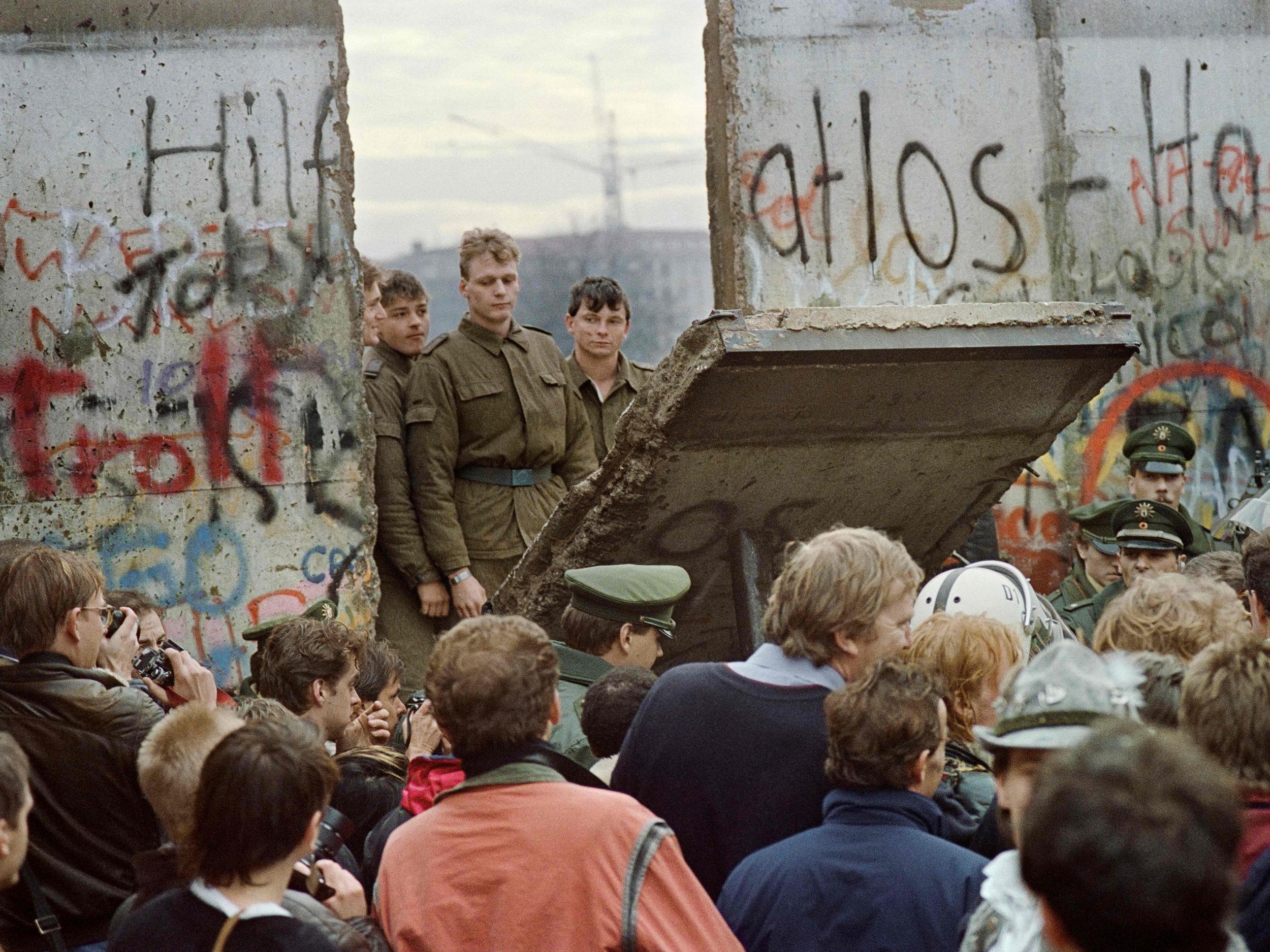Hostilities between old and new Europe linger three decades after the fall of the Berlin Wall
But now, new reasons for hope: Donald Trump’s protectionism is forcing central and east European nations to forge better relationships with their near neighbours

Even 30 years on, there are still mysteries about exactly how the Berlin Wall fell on 9 November 1989. Was it a response to a slip of the tongue by a beleaguered East German spokesperson, or the result of an official decision taken by a panicked leadership before due preparations had been made? Did sheer force of numbers then force the breach, or was rather the spirit of the time?
It was not, it should be stressed, the first breach of the Iron Curtain that divided Europe. That came on 19 August, when Hungarian border guards took a split-second decision to watch, rather than shoot, when pan-European picnickers at the country’s eastern border cut the border fence.
Nor was the whole Iron Curtain asunder when the wall fell. There were still upheavals to come: the removal of Todor Zhivkov in Bulgaria, the Velvet Revolution in what was then Czechoslovakia, the violent overthrow and execution of the Ceausescus in Romania – and, two years later, the dissolution of an enervated Soviet Union.
Subscribe to Independent Premium to bookmark this article
Want to bookmark your favourite articles and stories to read or reference later? Start your Independent Premium subscription today.
Join our commenting forum
Join thought-provoking conversations, follow other Independent readers and see their replies